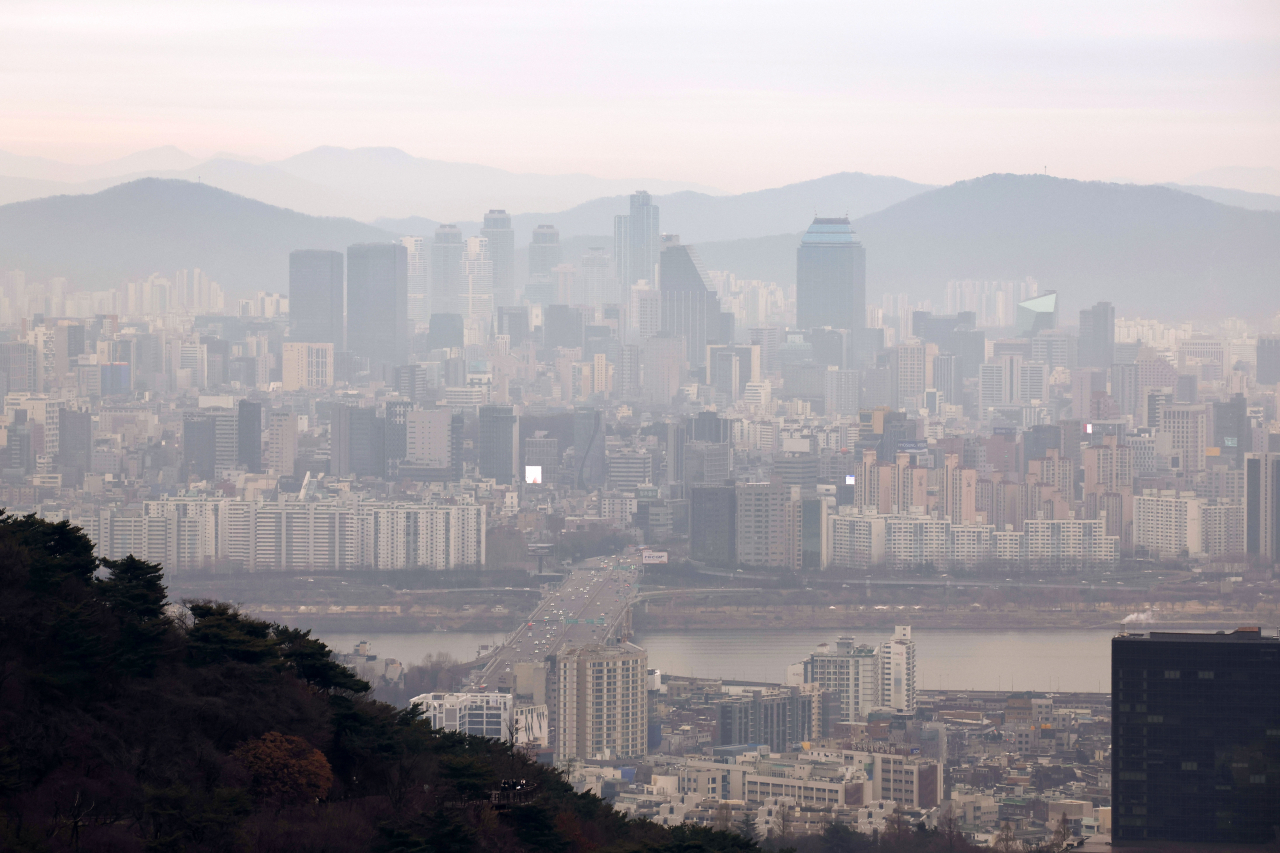Korea recommends work from home when fine dust levels high
By Lee JaeeunPublished : Feb. 22, 2024 - 14:44

The Ministry of Environment on Thursday said that it will recommend that people work from home whenever emergency dust reduction steps are taken, starting next month.
According to the Ministry of Environment, the Special Task Force Committee on Fine Dust will include a recommendation to work from home or take time off when emergency dust reduction measures of fine dust are implemented in the government's "Total Response Plan for Spring Fine Dust," which it is set to announce next week.
Under the Special Act on Particulate Matter Reduction and Management, which took effect in 2019, local governments are obliged to take emergency steps if the daily average level of PM 2.5 exceeds 50 micrograms per cubic meter. If the emergency measures are enforced, heads of local governments have to regulate the operating hours and use of coal power plants and other large-scale dust emitters. Construction sites must also be ordered to reduce operations.
In addition to the above emergency measures, working from home, minimizing travel and videoconferencing will be strongly recommended starting in March, according to the Environment Ministry.
The burden on industries is not expected to be significant, as emergency dust reduction steps are taken only about 10 days a year, according to local reports.
The plan comes after President Yoon Suk Yeol called for a response to the fine dust problem.
Yoon said Tuesday, "This year's fine dust concentration is expected to be higher than previous years." He ordered relevant ministries to respond actively, saying, "Intensive preparations are necessary."
Two main sources of fine dust pollution are emissions from burning fossil fuels and vehicles within Korea. Another source is fossil fuel emissions blown in from China. The fine dust pollution is worsened further by yellow dust blown in from China's western desert and Inner Mongolia from March to May.
The number of days that yellow dust in particular is detected in Korea has been on the rise. According to data from the National Institute of Meteorological Sciences Institute, the number of days during which yellow dust was detected in Korea in March from 1991 to 2020 was nearly triple the corresponding figure from 1973 to 2000.
One reason for the huge increase in yellow dust is thought to be the rise in temperature and decrease in precipitation in the Gobi Desert and Inner Mongolia Plateau.
Notably, Korea's standards for PM 2.5 -- fine particulate matter or particles that are 2.5 microns or less in diameter -- are significantly more relaxed than the international standard.
While Korea classifies levels of PM 2.5 above 35 micrograms per cubic meter as "bad" and above 75 micrograms as "very bad," the World Health Organization's air quality guidelines recommend countries to keep PM 2.5 pollution below 15 micrograms.



















![[Today’s K-pop] Treasure to publish magazine for debut anniversary](http://res.heraldm.com/phpwas/restmb_idxmake.php?idx=642&simg=/content/image/2024/07/26/20240726050551_0.jpg&u=)